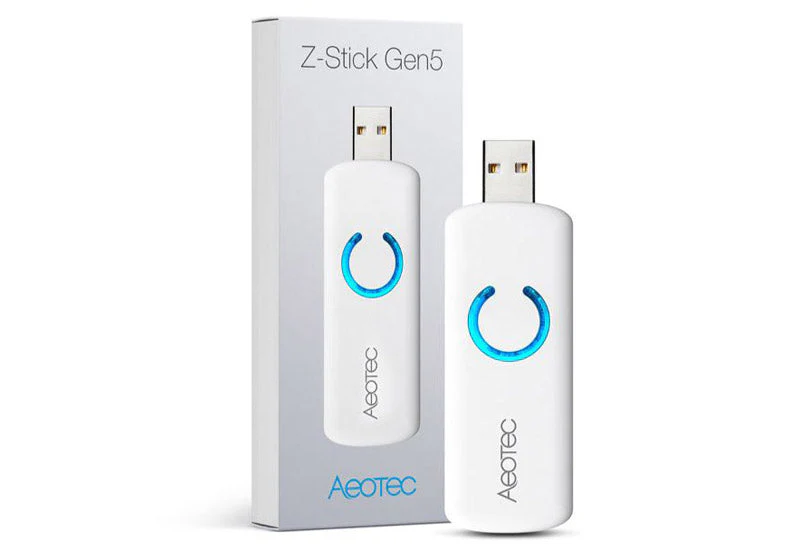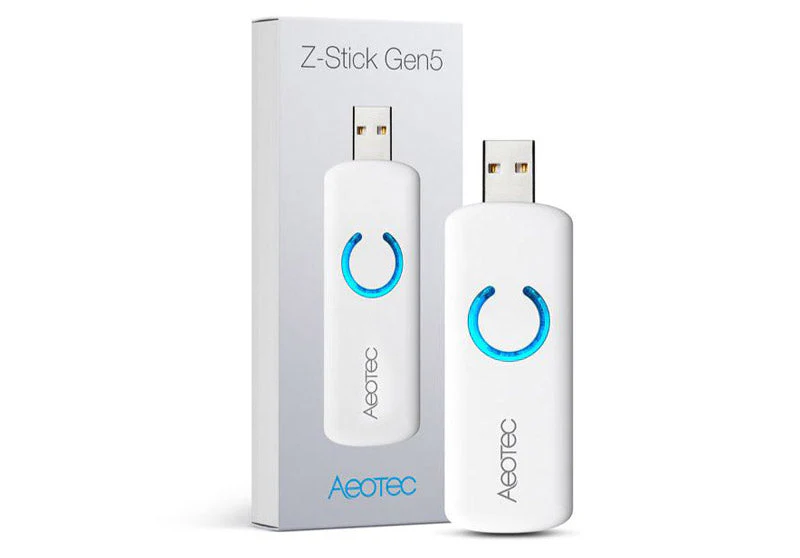Answers
Jun 06, 2016 - 04:10 PM
Hi Martin, I'm not sure about remotes but I can't see why not.I use the USB stick with either domoticz or hs3 as a transeiver. Other z-wave devices are controllable via triggers set in either software. Example. A z-wave pir detects movement, sends a motion detected command to hs3 or domoticz via the USB receiver. A trigger or event is defined when movement is detected, switch on a light for x minutes.
Not sure how much you know about home automation and I apologise if I'm explaining stuff you already know.
Please feel free to ask any more questions.
Regards
Chris
Not sure how much you know about home automation and I apologise if I'm explaining stuff you already know.
Please feel free to ask any more questions.
Regards
Chris
Jun 06, 2016 - 04:30 PM
Why would you want to do this. Each controller will generate a unique network ID. Some Z-wave devices will be members of one or other Network ID but not both. Plus I have found it difficult or impossible to back-up this Z-wave controller. If I could have some more back ground to the reasons I may be able to help further. M
Jun 07, 2016 - 08:41 AM
Note: No software is included with this controller. You need to use a suitable PC or Mac software such as Homeseer, Indigo, Domoticz, etc. Have a look at the available options
Jun 07, 2016 - 07:41 AM
Don't know much about Z-wave. The job I want it for is: I have a RF plug in the bedroom. The Remote I have can turn this plug on or off, but the remote doesn't tell me what state the plug is, whether on or off. So I want the USB so I can turn this plug on or off and know what state the plug is in, and still use the remote when in the bedroom.
Jun 07, 2016 - 07:58 AM
Hi Martin,The Z-wave controller creates a unique Network ID and Node ID when initialised in a Controller such as Vera, Homeseer and many more. The Z-wave devices are then initialised during a include phase and will receive the unique Network ID plus are given a unique Node Id, each additional Z-wave device will have the same network ID but another unique Node ID. All this is done to ensure that that controller only 'talks' to those devices registered and it is done over a encoded (Network ID and Node) RF link. Some house alarms use this system and in my case home automation. Each Z-wave device can send and receiver information and keep their neighbours up to date with any network changes. When you say an RF plug is this a Z-wave compliant plug? Is the Z-wave controller attached to a home automation server? Normally the home automation server will tell you the state of any Z-wave devices. I have a se
t of curtains that open and close via a Z-wave device. However if I miss a open or close command I don't know the state of the curtains, I have a light sensor that tells me if it is night or day and I run an event that checks the night/day state and closes an open curtain or opens it to match the time of day. Sorry it is a long reply but there are so many factors involved.
Hope that helps
t of curtains that open and close via a Z-wave device. However if I miss a open or close command I don't know the state of the curtains, I have a light sensor that tells me if it is night or day and I run an event that checks the night/day state and closes an open curtain or opens it to match the time of day. Sorry it is a long reply but there are so many factors involved.
Hope that helps
Jun 07, 2016 - 08:09 AM
Yes it,s a z-wave plug. I don't have home automation server. Just my remote.
Jun 07, 2016 - 08:13 AM
Hi Martin,
I am open to suggestions but without a controller and some home automation such as Homeseer HS3, which by the way runs on a Raspberry, you cannot find the state of the plug.
Cheers
I am open to suggestions but without a controller and some home automation such as Homeseer HS3, which by the way runs on a Raspberry, you cannot find the state of the plug.
Cheers
Jun 07, 2016 - 08:18 AM
Won't the USB stick and pc software tell me the state of the plug?
Jun 07, 2016 - 08:35 AM
Hi Martin,
What PC software are you using? If it is a home automation then the answer is yes but I cannot see another method but I am open to suggestions from others.
What PC software are you using? If it is a home automation then the answer is yes but I cannot see another method but I am open to suggestions from others.
Jun 07, 2016 - 08:43 AM
Was just going to use a free software. I'll just have to try it when it arrives. Thanks for the help.
Jun 07, 2016 - 09:36 AM
Hi Martin,
Can you have the details of this free software as I am always looking for alternatives to setting up a test Z-wave network.
Cheers
Can you have the details of this free software as I am always looking for alternatives to setting up a test Z-wave network.
Cheers
Jun 07, 2016 - 09:45 AM
I haven't got it yet, but there are a few. This one confirms it compatiable openremote
Jun 07, 2016 - 09:48 AM
Generally RF devices only receive signals. You would need a device with 2 way communication like z-wave. The RF you have will most likely not work the way you want. You will also need software or central pc/raspberry pi/automation hub to control all signalling if you purchased the z-wave usb z-stick. Be warned automation is fun, addictive, complicated and can become quite expensive.
Jun 07, 2016 - 09:52 AM
It's a z-wave plug.
Jun 07, 2016 - 09:57 AM
In that case the USB stick would work but you'll need a computer to setup the logic. Ie if pir is detected between certain hours and the switch is off, then turn it on. Just an example
Jun 26, 2016 - 06:41 AM
It's very unlikely this will work with what you are looking to achieve. Z-wave works in the 868Mhz frequency band, which your RF device won't be as they usually operate in the 433Mhz range. You could change the plug module for a Z-wave one, such as the TKB type, otherwise you will need to stick with your remote. Also with the RF units you need to consider that they generally don't have a means to supply a status signal, so there isn't really a way of knowing status unless there's a lamp or similar connected, and some do have small LED's on them.





Add New Comment